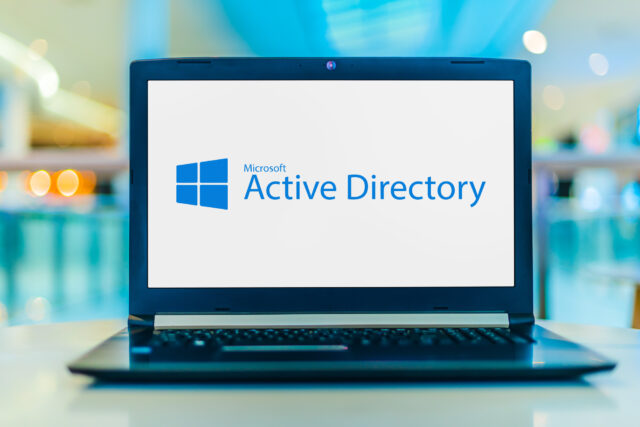Active Directory recovery: Rebuilding the forest from root to tip

After 25 years, Active Directory remains a stalwart of IT infrastructure. Supporting access for an estimated 610 million employees, it enables seamless, secure connectivity to the networks that power daily business operations worldwide. Favored by nearly 90 percent of Global Fortune 1000 companies, according to Frost & Sullivan, Active Directory has long been the primary mechanism for enabling staff to connect, collaborate, and work efficiently.
Despite the rise of cloud-based alternatives, Active Directory's scalability, compatibility, and established integration with Windows environments has ensured its continuing appeal for hybrid and on-premise infrastructures. Its unrivaled scalability and powerful centralized control make it the go-to solution for managing users, devices, and policies at scale.
The keys to the digital kingdom
But popularity has its downside. Active Directory’s prominence has made it a prime target for cybercriminals, as proven with the recent M&S cyber attack. Cybercriminals were able to gain access to the retailer’s main database for Active Directory Services and spread throughout the domain, taking whole systems offline and causing M&S to freeze online orders.
Breaching Active Directory security grants cybercriminals the keys to the kingdom - control over an organization’s entire digital environment. Hackers know that even with the most robust security measures in place, a user, at some point, somewhere on the network, will make a mistake which will give them a way in.
Initial access to part of a network might be gained through numerous techniques including phishing emails, malicious links, or compromised credentials. But once inside bad actors will quickly escalate privileges to obtain admin rights, often specifically targeting Active Directory with ransomware. By the time ransomware is deployed, attackers have usually disabled security tools and backups, maximizing its impact and increasing the pressure for immediate ransom payments.
Once locked out of Active Directory, it’s near impossible for IT staff to get back in to attempt to resolve the situation. If they do regain access, recovery is possible but extremely complex.
Along with the critical role Active Directory plays in managing identities and access, it is also deeply integrated with systems like file servers, applications, email platforms.
Therefore, recreating its structure involves far more than just restoring user accounts. It requires rebuilding precisely, starting from its roots right up to the tip. Much like each tree within a forest, the leaves can’t survive without their branches, and the branches need a trunk and the underlying root system. In the same way, Active Directory must also be reconstructed in exactly the correct order, otherwise it will fall over and the process will need to start all over again.
Microsoft’s Active Directory Forest Recovery Guide provides a meticulous, step-by-step method for this, which can involve anywhere from 50 to 100, or more, individual steps, depending on the extent of an organization’s network. If done manually, it often takes days to weeks to complete. All the while, business operations cease to function and users cannot access important applications.
Additionally, attackers may have tampered with the original environment, meaning every object and configuration must be scrutinized for compromise.
Automating recovery and safe restoration
The technical intricacy, potential for reinfection, and enterprise-wide paralysis, make Active Directory recovery one of the most challenging aspects of post-ransomware incident response. And, according to research in 2024, Active Directory was the most targeted attack surface for ransomware, so it’s a problem that’s not going away. However, the recent growth of automated recovery solutions is substantially reducing the time and complexity of restoring Active Directory environments.
These intelligent tools work by automating critical processes, such as transferring key roles from failed domain controllers to operational ones. Instead of stressed-out IT teams relying on error-prone runbooks and struggling to follow long lists of recovery actions for different applications, automated solutions take care of the entire workflow. Complete Active Directory forests can be restored along with domain controllers and individual objects and attributes, such as users and their relationships.
Active Directory topology views enable simple and rapid identification of which domain controllers to prioritize and how they should be recovered. Users can also compare all changes in the Active Directory domain between two points in time, to quickly identify and choose whether the data should be recovered or reverted, and then can restore it on the spot.
This capability to visualize Active Directory topology infrastructure enables faster, more informed decision-making throughout the recovery period.
By easily identifying which domain controllers should be restored first and guided through each step, teams can radically reduce downtime of critical directory services. Before going live, they can validate the integrity of credentials, systems, and applications at scale. This means businesses can slash recovery times while being assured they are not reinfecting their systems or reintroducing compromised configurations.
By removing the confusion and complexity from post-breach recovery, automated solutions will not only protect the trustworthiness of Active Directory, they will ensure its continued relevance for years to come. Even in an increasingly chaotic threat landscape, organizations will still be able to blossom, confident their tech foundations are secure, resilient, rooted, and ready for whatever comes next.
Image Credit: monticello / Depositphotos

Ian Wood is Senior Director Systems Engineering at Commvault
